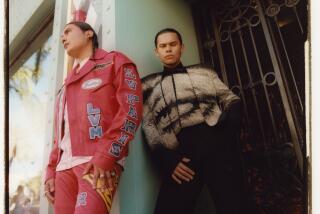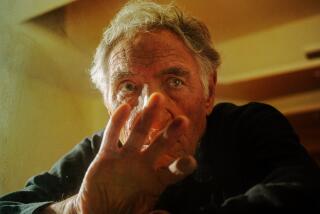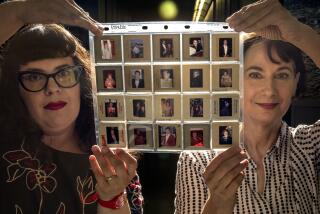Pride on the nation’s doorstep
- Share via
In 1892, amateur photographer Augustus F. Sherman entered public service as a registry clerk with the Immigration Division at Ellis Island, where an average of 5,000 immigrants streamed through each day during the peak periods of arrival (1905-07). During these years, Sherman used the access provided by his position to create more than 200 photographic portraits of individuals, families and groups who were detained either for medical reasons or further interrogation.
Peter Mesenholler, research assistant with the Rautenstrauch-Joest-Museum of Anthropology in Cologne, Germany, described Sherman’s motivation in taking the photos. The photographer’s goal was anthropological documentation of the different physical characteristics of the so-called new immigrants during the historical period in which the flow of immigration shifted from northwestern Europe to southern and eastern Europeans, primarily Catholics and Jews from Eastern Europe and Italians and Greeks from southern Europe.
“He certainly wasn’t interested in their individuality,” Mesenholler said by telephone from Cologne. “He was obviously quite interested in ethnic types.” Sherman’s subjects changed somewhat in 1917, when Congress passed a Literacy Test Act that required immigrants to be literate in some language: “There were not so many southern and eastern Europeans; Sherman began photographing famous people like Emma Goldman, or wrestlers or even the freaks. Interestingly, these people he names; all the other ones, they were just types, the new American ‘breed.’ ”
Although individuality was not on Sherman’s agenda, it is just that quality that shines through in the new book “Augustus F. Sherman: Ellis Island Portraits 1905-1920” (Aperture, June 2005), including an introductory essay by Mesenholler .
“These were certainly not the ‘huddled masses’ described by Emma Lazarus in her sonnet [“The New Colossus,” 1883],” he said. “I got hooked on their pride, their dignity, their gravitas, in a way.”
And, Mesenholler added, it was that pride that led many of the immigrants to don their finest folk costume just as the ships entered the New York harbor. “People rushed downstairs to steerage, dressed in their Sunday best and rushed back up on deck again,” he said. “And then the very minute they landed in Manhattan, they discarded it -- they packed it and took it with them to the Midwest or wherever, but they would have been ridiculed in New York.”
-- Diane Haithman
More to Read
Sign up for our Book Club newsletter
Get the latest news, events and more from the Los Angeles Times Book Club, and help us get L.A. reading and talking.
You may occasionally receive promotional content from the Los Angeles Times.










